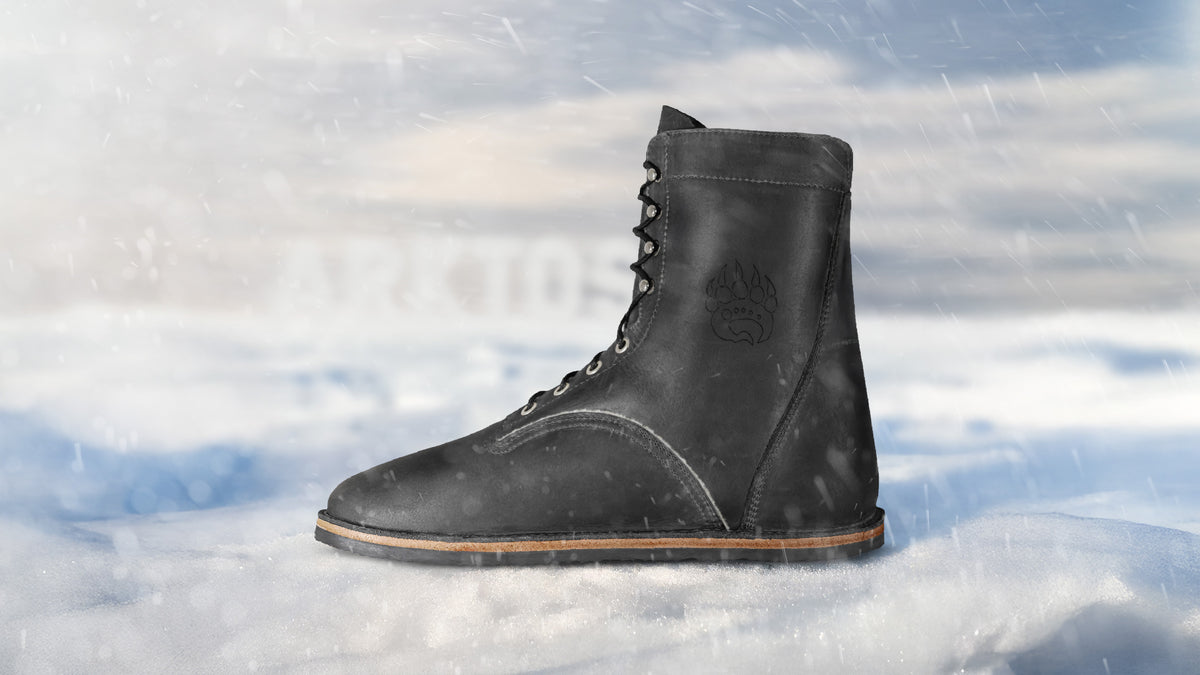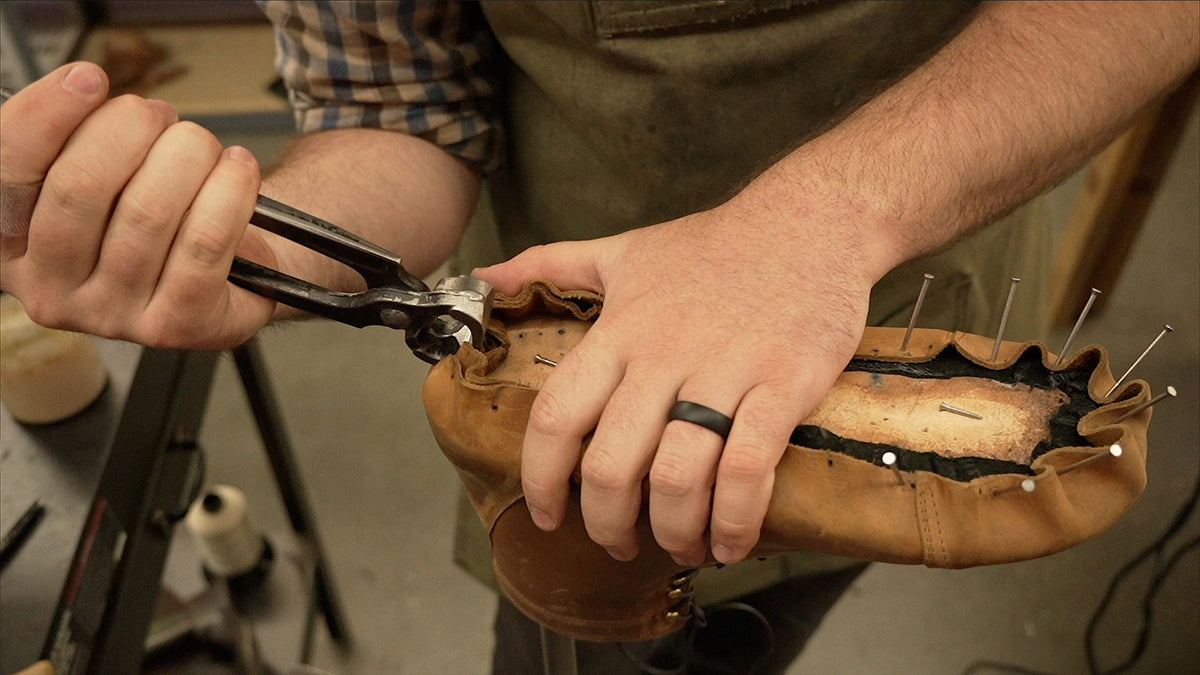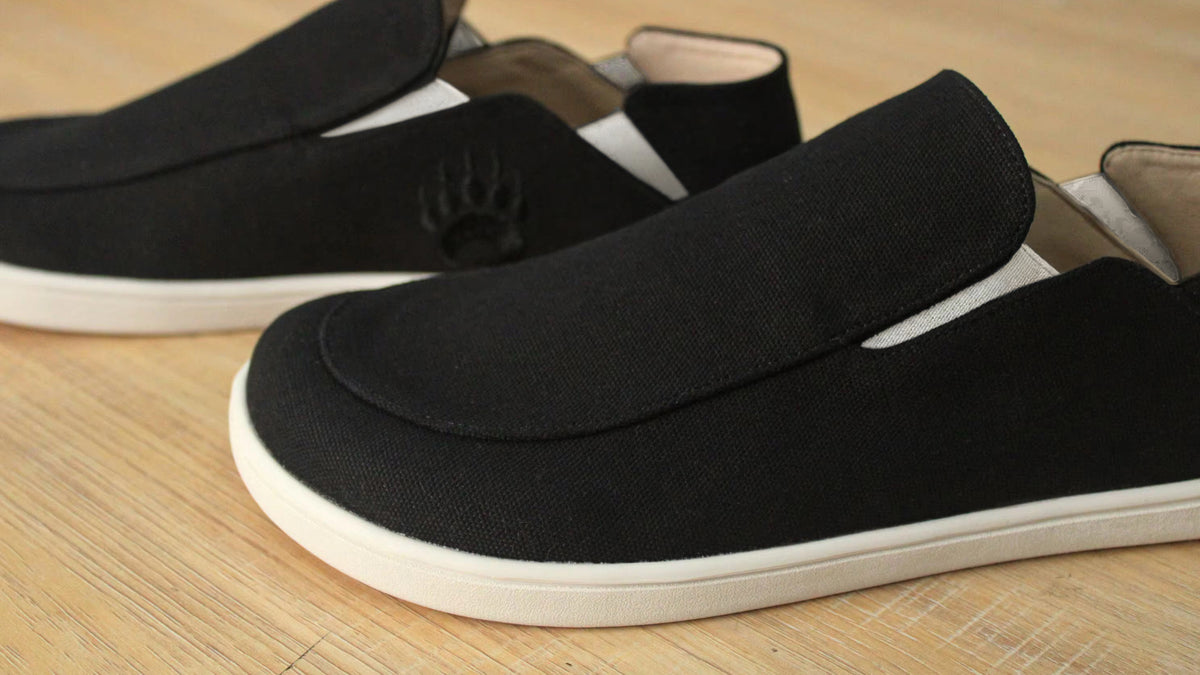Treating Bunions (Without Surgery)
By: Lily Hoog-Fry & John Baker
What are Bunions?
Bunions, aka ‘Hallux Valgus,’ is the structural change of a lifetime of shoes that squeeze our toes together. They appear as a first ray (where the base of your big toe meets the inside of the foot) that appears stuck, as if in pointed-toe, even with shoes off. This deformity and inflammation make the big toe joint protrude inward, while the big toe itself crowds or even crosses the second toe as it moves laterally (first metacarpophalangeal joint adduction).
Severe bunions can make narrow shoes uncomfortable or impossible to fit into while giving us pain in the big toe, decreased foot stability, and decreased quality of life (Hurn et al, 2016). This is why we believe the best shoes to help prevent bunion formation and the severe pain that often follows have a wide toe box and no arch support. The less time you wear ill-fitting shoes that put your feet in an unnatural position the stronger the structure of your feet!
Common Causes of Bunions in Women & Men:
The Hallux Valgus deformity is more common than we’d like to believe – a quarter of us, 18-65-year-olds, and more than a third of adults over 65 have bunions (Hurn et al, 2016). And although bunions can run in families because of handed-down foot morphology, they occur most commonly in women who wear heels with tight toe boxes and men with flat feet (see our article on flat feet here) (Nguyen et al, 2010). Women wearing heels being more prone to bunions make biomechanical sense: high-heeled shoes are like orthotics that throw you into a bunion.
But let's talk about men with flat feet, as its a major underlying cause of bunions. Guys, it’s a lot like wearing high heels if you have flat feet. Here's why: the bunion forms because flat feet cause the foot to roll the feet excessively inward (pronate), essentially dropping the medial longitudinal arch and the medial ankle to the floor. When these structures drop, the bones of the foot have to orient themselves in a less-than-ideal manner, all of which angle the big toe in and roll it. This role is crucial because it causes the joint to rotate, so as the big toe tries to flex, it actually begins to flex at an angle inward, perpetuating the bunion progression.
When you walk around all day like this, you're essentially walking around with your foot in the same position as if you're wearing high heels. Over time this adds up. The repetitive microtrauma against your foot and improper loading will take over, and you, too, may develop painful bunions. This is commonly characterized by forming "bony lumps" or a "bony bump" on the base of the big toe.
Flat feet also come with weakness in the muscles that make up the arch inside our foot (medial longitudinal arch). One of the muscles in the medial arch, crucial in the formation of bunions, is the abductor hallucis. This muscle is smaller and has less leverage than its adducting counterpart, but it's the muscle we need to strengthen to help change the shape of that first ray!
The Truth About Bunion Surgery:
Don’t be fooled. The severity of your bunion might be too extreme to heal with nonsurgical treatments only. A surgical technique might be warranted with crazy names like ‘Arthrodesis’ and ‘Distal Osteotomy’ (Ferrari, 2009). And even then, surgery isn't a magic cure for your foot problems as it comes with possible bunion recurrence, complications, and months of immobility while recovering (Nguyen et al, 2010).
If you are contemplating surgery, we encourage you to explore nonsurgical options to start bunion treatment – foot exercises targeted at improving biomechanical foot function have been found to be clinically helpful in the treatment of bunions and reduce ongoing pain according to a systematic review (looks at a lot of studies at once, this one had 589 participants total) by the Journal of Foot and Ankle Research (Nix et al, 2013).
Because bunions are on a spectrum of severity of big toe ADDduction (or toward the midline of the foot/ the second toe, crowding our other toes), it is possible to affect changes in bunion pain, associated numbness, and deformity, along with improvements in aesthetic considerations and instability to increase the quality of life and foot health.
Other than obviously needing to get our feet out of the constraining shape of many shoes and into barefoot shoes (i.e., proper footwear) with a toe box that has enough room for the shape of our toes, there are a couple of main movements that we want to target when designing effective, science-backed bunion movement therapy. The foundation is that bunions are caused by too much pronation (rolling inwards of the foot) and from that excessive loading, we get too much of the wrong movement of our first ray (where it bends and rotates inward) (Karabicak et al, 2015).
Get That Big Toe Back Out!
First, we need to talk about the toe-off stance portion of gait during normal activities. At the last moment, before we push off our back leg while walking, we need the joint of the big toe to not only have the mobility to fold toward the top surface of the foot (extension or dorsiflex) but also to generate force as we push off.
The main problem with bunions is that a toe with a bunion can’t do either. This means in feet with bunions we need to manually move that big toe outward, back to where it can push off from. We can do this with many different approaches like using toe spacers, our hands, and, as a study which decreased pain and the angle of deformity on women’s bunions over 10 days reported, KT tape (stretchy- therapeutic tape)(Karabicak et al, 2015). The more you can use these methods to take care of your feet, and increase the time you spend getting those toe joints to move back toward the midline of the body, the better!
Connecting to Dusty Muscles:
The next phase of the attack focuses on strengthening this newfound big toe mobility via toe abduction exercises (Karabicak et al, 2015). These are simple but require a lot of focus to execute. Sure, your PR last week was hard, but let me tell you, toe abduction is a real brain teaser (I still to this day am way better on one side than the other, it is all a process not a finish line folks). Stand and try to lift your big toe slightly up but mostly outward and away from the center of your feet. It can be really helpful to touch the medial arch of the foot where the abductor hallucis is, and ask yourself with a kinesthetic cue, “can I turn this on?”
Correcting the Foot Deformity:
Secondly, we need to strengthen our foot’s ability to move away from pronation, aka into supination (Karabicak et al, 2015). This will lift the medial longitudinal arch and start to prevent the cascade of the foot falling inward, into the big toe tilting outwards into the big toe eventually rotating inwards that is the hallux valgus deformity. The way we like to do this is to put a wide band around your ankles and another between just your first toe knuckles under some tension (1st metacarpophalangeal joint). While keeping weight through your big toe (with the goal of not letting that band slip and snap together), slowly lift the arch of your foot up and out against the tension of the band around your ankles. Repeat as many times slowly as you need to feel a gentle burn of muscle fatigue in your aches.
Magic Movement to Reduce Bunions!
Lastly for the exercises for hallux valgus is combining the mobility of the big toe with supination strengthening is the Foot Screw. This is as close to magic bunion sauce as it gets (my small bunion completely disappears, nobody is perfect, I am working on it!). You start by placing just your big toe down so it is pointing 45 degrees toward the midline. Then, letting friction keep the toe there, screw the rest of your foot into lateral rotation so the foot (not toe) faces forward. The big toe should actually be pointing medially from your foot now (not just straight) and the arch of your foot will be engaged and lifted. Spend time moving under load in this position (think set your feet like this before your lighter round of squats, do this while standing to do the dishes) or even add slow and controlled toe raises once it gets easy.
The more your big toes can splay out, the wider base of support of your foot, which leads to less rotational stability needed from the upstream knee (ouch it is just a hinge joint) and hip, which leads to making you feel more stable and stronger throughout a lifetime of movement (hallux valgus has been reported to increase falls in the elderly)(Nix et al, 2013).
So in short, before you opt for surgery or just blame your bunions on your genetics, spend dedicated time improving your foot mechanics, wearing your toe spacers and getting shoes that fit the real life shape of your feet. The earlier you start working on your foot health, the less likely you are to acquire bunions or the more likely they are to change! Set that big toe free!



